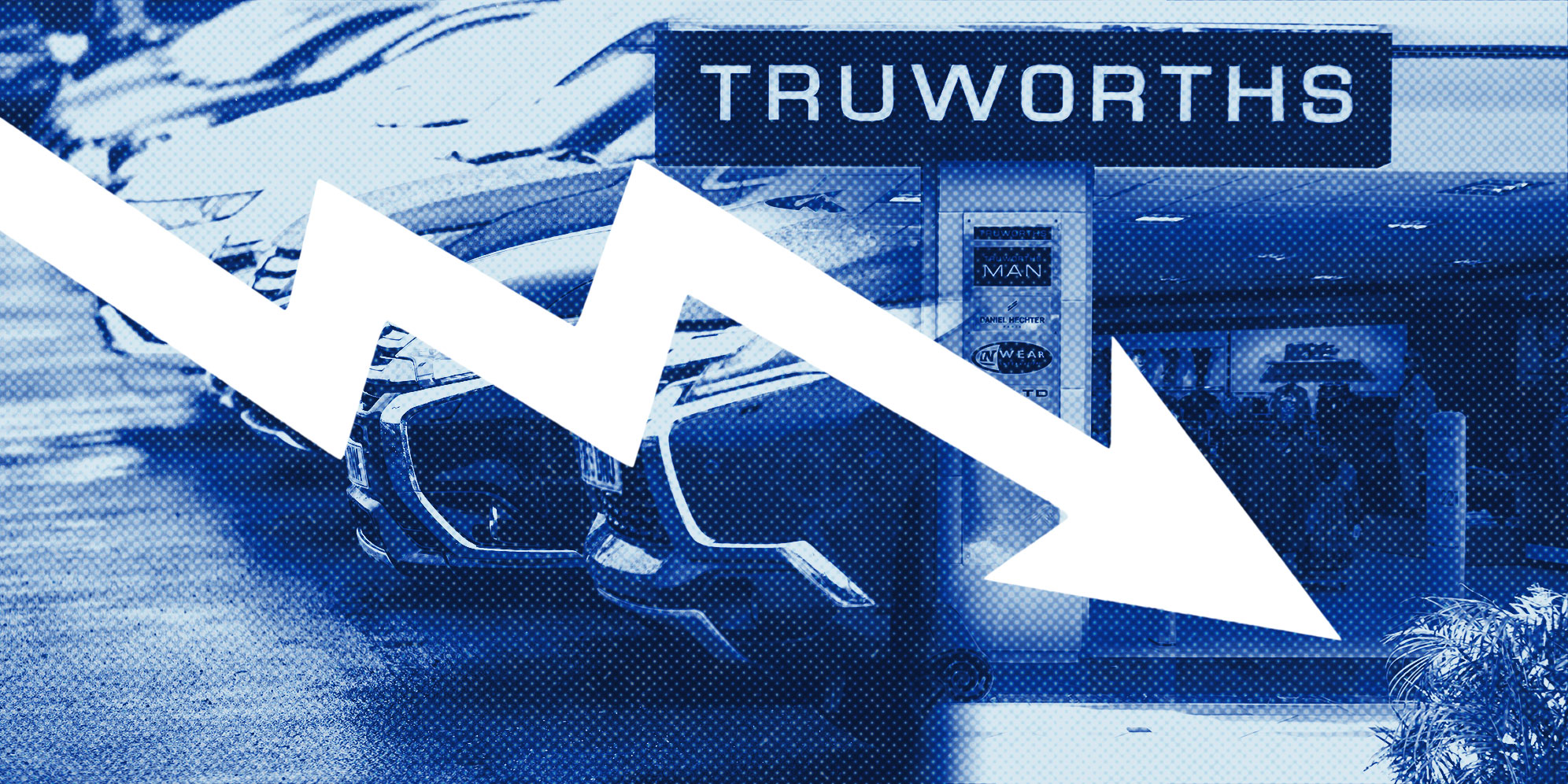Truworths: of typos and tepid growth
Truworths released results on Thursday. On Friday, they then cancelled that Sens announcement and released another one. To my eye, they looked identical apart from Truworths fixing the spelling of its name, which was put out as Truwroths in the first announcement.
It’s more like true wrath – of the market, that is. The share price is down 24% year-to-date and has therefore given up almost all of its gains over the past 12 months. This is a most unfortunate situation that has been driven by a combination of deteriorating local market sentiment and weak numbers from the company.
For the 26 weeks to 29 December 2024, Truworths managed retail sales growth of just 2.4%. At this stage, you may be hoping to read that this disappointing top-line number was due to a strategic decision to protect margin at the expense of sales growth. If that was the case, then gross profit margin would be higher and the picture would look better at gross profit level. Alas, gross margin actually fell from 53.6% to 51.8%.
Sadly, this means that gross profit was down 1.1% in the end. Don’t let their top-line number fool you: in terms of the amount of money actually generated from selling their products, Truworths went backwards.
Things would be a lot worse here if not for strong cost control. Trading expenses only increased by 0.7%, which is way below inflation. Even then, the net effect is a drop in trading profit of 8.3%, as operating margins deteriorated thanks to poor gross profit performance.
By the time you’ve worked through to headline earnings, the impact of impairments and other adjustments in the base period means that the year-on-year move is -3.7%. With more shares in issue than before, the metric that the market focused on is a drop in Heps of 4.6%. Even cash from operations failed to be a silver lining here, as the improvement in that number was driven by the end of the period being before month-end payments were made.
The interim dividend is down 4.5%. If you consider that the share price is flat over 12 months, this means there’s still slightly better growth sentiment in this stock than a year ago. Unless the tide turns quickly for Truworths, what’s left of that sentiment will disappear. As impressive as the performance in the UK business has been recently, the market knows how volatile that market can be. Investors are far more interested in seeing progress in Truworths Africa, the close-to-home business that they know, understand trust. Also, it’s just a numbers thing at the end of the day – Truworths Africa contributed 66.5% of group sales in the latest period and hence the UK performance cannot offset weakness at home.
What exactly was the market hoping for at Motus?
In a busy week of earnings, Motus stood out as having one of the most negative responses in the market to the release of results. In the last week of February, the share price lost 19% of its value. Over 12 months, this means that Motus is down 4%. Sure, there’s a dividend to help make up for the drop in share price, but you were a lot better off with your money in a basic savings account than in Motus.
Such a sharp response in the market only happens where there’s a substantial disconnect between what investors expected and what actually happened. For some reason, the market was clearly hoping for a strong set of numbers out of Motus. It’s hard to imagine why, as it’s no secret that the automotive industry has been in a state of flux due to immense disruption by Chinese brands.
Under the circumstances, Motus actually pulled off a decent result. Although revenue was down 2% and EBITDA fell 4%, the positive impact of lower levels of inventory and debt was felt in the form of a 10% reduction in net finance costs. This saved the day, with Heps up 3% and the interim dividend up 2%.
Despite a performance that was still in the green (albeit not by much), the market dumped Motus as fast as it could. Management guided that although things look tough for the rest of the year, there has been positive momentum that should support at least a flat Heps result for the full year. This wasn’t enough to give any support at all to the share price.
Based on the guidance, we need to look back to Heps for the year ended June 2024 to see what 2025 could look like. The 2024 number was 1,479 cents, down 28% from the prior year. 2025 is therefore unlikely to reflect any kind of recovery, which leaves Motus well off the pandemic levels of performance. Assuming they manage to achieve flat HEPS in 2025, the current Motus share price of just over R90 (and dropping) implies a forward PE multiple of 6x.
Market sentiment really has fallen off a cliff this year on the JSE, with even resilient company performance banished into the realm of “cheap” single-digit P/E valuations. The challenge is that the JSE is only cheap if enough people believe that it is cheap and hence are willing to pay more over time for the assets until they are fairly priced. The market is ultimately a voting system and investors have certainly voted with their feet thus far this year. Although it feels like Motus has been punished too severely for these numbers, there will still need to be a strong catalyst for market sentiment to shift and for the share price to start heading higher again. It’s hard to see what that near-term catalyst might be. DM





